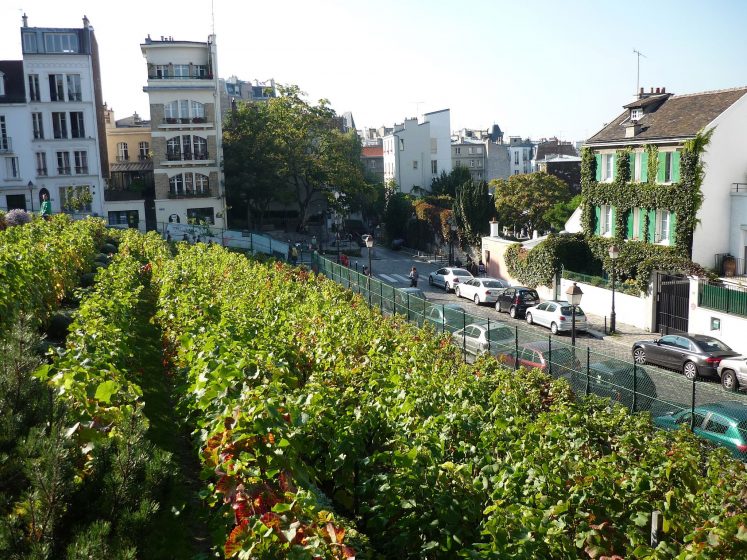The 4-Minute Rule for City Blooming
Table of ContentsThe smart Trick of City Blooming That Nobody is DiscussingThe City Blooming IdeasThe Facts About City Blooming UncoveredGetting The City Blooming To WorkNot known Incorrect Statements About City Blooming

As you stroll the roads of the Bronx, Southside Chicago or East Oakland, you might see have even seen large stories of ripening fruits and veggies being harvested. What exactly are city farms and area yards? Urban farming, urban farming, or urban gardening is the technique of cultivating, processing and distributing food in or around urban locations.
Normally, urban farming as a technique is a larger investment than gardening. There are numerous extra hours spent right into the minutiae of farming, from the crop strategy to the often tending of your beds. This time commitment handles an entire new definition once you realize the objective that is being functioned in the direction of and dedicated, specifically that of gaining a bountiful return of plants to be eaten.
A neighborhood garden is a single tract gardened collectively by a team of individuals. Neighborhood yards make use of either individual or common plots on exclusive or public land while creating fruit, vegetables, and/or plants expanded for their appealing look. The basic design right here is that a big group of people each contribute a fairly little amount of time to functioning their very own plot, and receive the fruits of their labor because of this.
City Blooming for Beginners

There are area gardens, much of whom Little Axe Peppers has actually partnered with, that deal aid to refugees, low-income family members, youngsters teams, and neighborhood companies by helping them create and grow their very own gardens. The distinctions in between neighborhood yard and city ranch are nuanced, though in the end the same basic task takes placefood crop cultivation yet within different business frameworks.
Urban ranches are generally extra organization and technology oriented, with the primary function of optimizing returns and marketing produce. Industrial metropolitan farms are usually targeted at expanding manufacturing on usually small land location with advancements in modern technologies such as aquaculture, hydroponics, and greenhouses and may companion with a commercial cooking area to develop locally-produced value-added fruit and vegtables products such as jams and sauces.
Excitement About City Blooming
The produce is generally grown on a much smaller sized scale and is taken home to consume at home or to share. By giving much required environment-friendly areas in destitute, concrete metropolitan areas, they enable the advantages of backyard gardening to those lacking backyards, and work as superb examples of self-organization and community advocacy.
Some community yards, usually in city areas, move into expanding for business usage while some urban ranches open up their land for more socially conscious benefits. No matter just how you specify and differentiate both, they are both favorable pressures forever in cities around America and the globe. They both offer simpler access to fresh, regional produce; enhance a community's aesthetic; and act as excellent academic tools, showing individuals where their food originates from. Small Axe Peppers has actually currently partnered with over 73 community yards around the United States.
As all of Small Axe Peppers' warm sauces are sourced with peppers from community gardens, your acquisitions directly aid fund these regional jobs (https://forums.hostsearch.com/member.php?263116-cityblooming). Take component in the transformation by.
A friend of mine just recently commented in a discussion concerning gardening that "It's fascinating, I have actually always assumed that farming as a practice is somewhat like gardening. As I invested more and even more time in my Urban Farming class I've come to understand that to say that horticulture is a miniature expansion of agriculture would be a little bit of stretch.
City Blooming for Beginners
They both focus on the care of plants for some objective that can be nutrition, revenue or just the pleasure of the craft. They both require a financial investment on top of a time investment, something that a great deal of people in our quick paced life do not have a lot of.
We can see that the resemblances are bountiful, however are the differences enough to create a distinction? As a trainee at NYU I have the opportunity to work with the leave It Better Foundation, a team that teaches fundamental nourishment and gardening to secondary school pupils. https://www.easel.ly/browserEasel/14490178. This experience offered me a thorough foray into the globe of amateur gardening past what many people have touched with
Farming as a method is a larger investment than horticulture. There are plenty of much more hours invested right into the minutiae of farming, from the plant plan to the tending of your beds.
The ordinary gardener tackles his obligations as a job as opposed to a requirement and as such identifies his or herself from the farmer. Nonetheless with this difference in hand, they are both calming and peaceful exercises that any person can get, which by itself must be an ad for both.
Unknown Facts About City Blooming
Something failed - indoor plants. Wait a moment and attempt again Try once again